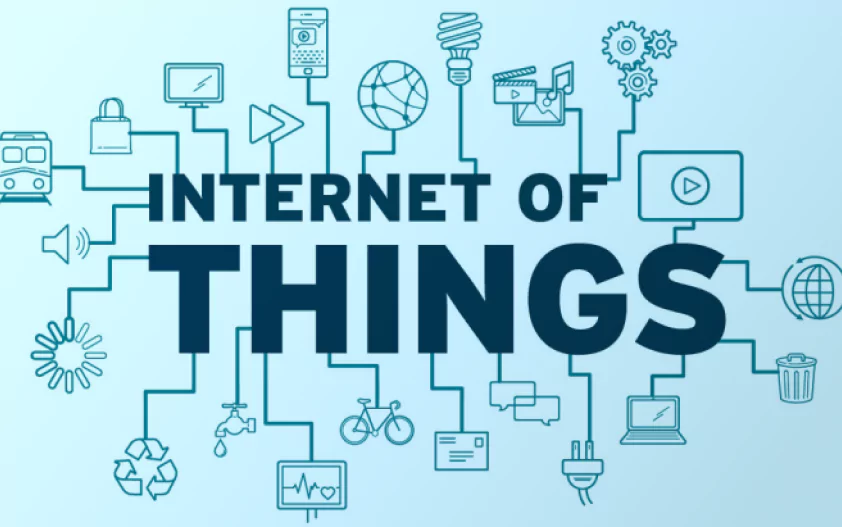Exploring the Power of Internet of Things (IoT)
The Internet of Things (IoT) refers to a network of interconnected devices, sensors, and objects that collect and exchange data over the internet without requiring human-to-human or human-to-computer interaction. In this IoT guide, we’ll cover its components, applications, impact, and the future of IoT technology.
1. Components of IoT:
- Devices and Sensors: Internet of Things (IoT) devices are physical objects that contain sensors, motors, and connectivity features. These devices collect data from the environment or interact with the world around them. For instance, examples include smart thermostats, wearable devices, industrial sensors, and smart appliances. As a result, they provide valuable data that can be used to make informed decisions.
- Connectivity: IoT devices communicate with each other and with cloud-based systems through a variety of technologies. These include Wi-Fi, Bluetooth, cellular networks (4G/5G), Low-Power Wide-Area Networks (LPWAN), Zigbee, and RFID. Consequently, these connectivity methods ensure seamless communication between devices, making the IoT ecosystem function efficiently.
- Data Processing and Analytics: Internet of Things (IoT) generates vast amounts of data, often in real-time. This data must be processed, analyzed, and stored effectively. To manage this, cloud platforms and edge computing systems perform the necessary processing. By doing so, they turn raw data into actionable insights, which enable smarter and more informed decision-making.
2. Applications of Internet of Things (IoT)
- Smart Home: In smart homes, Internet of Things (IoT) connects various devices, making daily life more convenient and efficient. For example, smart thermostats, lighting systems, security cameras, and voice-controlled assistants are just a few examples of devices that users actively control. As a result, these devices increase comfort, improve convenience, and boost energy efficiency in households.
- Industrial IoT (IIoT): In industrial settings, IoT plays a key role in monitoring and improving operations. Industrial IoT (IIoT) can be applied to tasks such as predictive maintenance, asset tracking, supply chain management, and remote monitoring. Ultimately, these applications help enhance industrial efficiency and productivity.
- Healthcare: Internet of Things (IoT) is revolutionizing healthcare by providing innovative solutions. For instance, wearable devices and remote monitoring systems collect patient data and send it to healthcare providers in real-time. As a result, healthcare providers can make timely decisions that improve patient care and reduce overall costs.
- Smart Cities: Smart cities leverage IoT to make urban environments safer, cleaner, and more efficient. For example, IoT is used in traffic management, waste collection, air quality monitoring, and smart energy grids. These solutions significantly enhance urban living, benefiting both residents and city officials . Learn more about Smart Cities at IEEE.
- Agriculture: In agriculture, Internet of Things (IoT) helps farmers make smarter decisions by monitoring various factors such as soil conditions, weather, crops, and livestock. For instance, IoT can optimize irrigation systems and help predict harvest times. This leads to improved farming practices, greater productivity, and increased sustainability.
- Retail: In the retail industry, IoT is used to enhance the customer experience, manage inventory, and streamline supply chain operations. For example, retailers use technologies like smart shelves and inventory tracking systems. Moreover, customer data gathered through IoT enables personalized marketing strategies, improving customer engagement and satisfaction.
3. Impact of Internet of Things (IoT)
- Efficiency and Productivity: IoT enhances efficiency and productivity by automating tasks, optimizing processes, and enabling data-driven decision-making across industries. As a result, the interconnectedness of devices ensures seamless operations, reducing human error and the time spent on manual tasks. This improves workflows and boosts operational efficiency.
- Innovation and New Business Models: Furthermore, Internet of Things (IoT) drives innovation and helps develop new products, services, and business models that deliver substantial value to businesses and consumers. The continuous evolution of IoT technology opens up unique market opportunities, allowing businesses to stay competitive and meet modern consumer demands.
- Enhanced Quality of Life: Moreover, IoT improves the overall quality of life by providing personalized experiences and addressing societal challenges in areas like healthcare, transportation, and environmental sustainability. Connected devices bring automation and remote control into daily life, enhancing convenience and improving living standards for individuals and communities.
- Challenges and Considerations: However, despite its numerous advantages, IoT also faces challenges. These include security and privacy concerns, interoperability issues, data governance, scalability, and regulatory compliance. Addressing these challenges is essential for the responsible and sustainable deployment of IoT technology. Explore IoT security from IoT For All.
4. Future Directions:
- IoT will continue to innovate and expand into new domains, such as smart infrastructure, connected vehicles, smart energy grids, and immersive experiences (IoT meets augmented reality/virtual reality).
- Emerging technologies such as edge computing, 5G networks, artificial intelligence, blockchain, and quantum computing will play a key role in shaping the future of IoT, enabling new capabilities and applications.
Conclusion
Internet of Things (IoT) is a transformative technology that is revolutionizing industries and enhancing quality of life. From smart homes to healthcare, agriculture, and retail, IoT has a profound impact. By connecting the physical and digital worlds, IoT creates new opportunities for innovation, collaboration, and sustainable development. The future of IoT holds vast potential, driven by emerging technologies that will continue to redefine industries and society.

